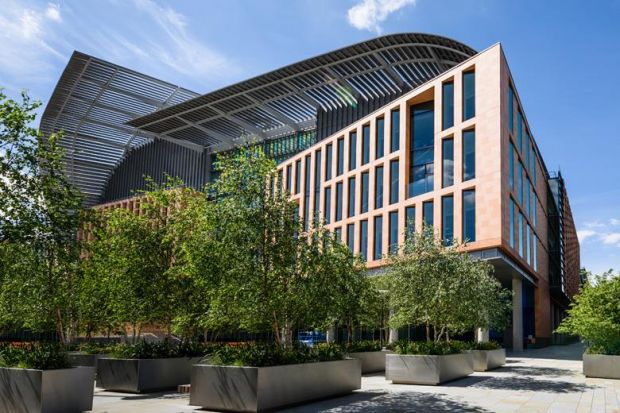Times Higher Education reporter Jack Grove was one of a number of journalists lucky enough to be taken on a press tour of the Francis Crick institute in London, the huge biomedical research lab funded by the Medical Research Council, Cancer Research UK (CRUK), the Wellcome Trust, University College London, Imperial College London and King’s College London.
You can read his report here. For those of you with an interest in facts and figures, here are 10 things that you may not know about the institute.
- The £650 million building has a total floor space of 93,000 square metres – nearly 1 million square feet – the size of 17 and a half football fields
- It has 1,553 rooms – twice as many as Buckingham Palace – and its own “wayfinder app” to help staff get about
- Some of its main air ducts are big enough to drive a transit van through
- To keep its 1,250 scientists cool, its air conditioning system circulates 430 cubic metres of air every second – the equivalent of emptying an Olympic swimming pool’s worth of air every 10 seconds
- It was built on the site of the derelict Somers Town Goods Yard, an area where milk, fish and other fresh produce was brought to London by rail each year. The railway storage area was heavily bombed in the Second World War and demolished in the 1950s and 1960s
- There is no car parking for staff other than disabled spaces – although it has 180 bike racks for staff
- More than 9,000 tonnes of steel were used in the Crick’s construction – the equivalent of the weight of 1,200 double-decker buses
- It has four floors below the ground and eight above on its south side (seven on its north) – with 185,000 cubic metres of soil removed during construction, enough to fill the Albert Hall twice
- It was the biggest construction project in the UK at one point. It was built by Laing O’Rourke, and its architects were HOK and PLP Architecture
- Three London universities – University College London, King’s College London and Imperial College London – each contributed £40 million to its construction. The remainder came from its other founding partners, the Medical Research Council (£270 million), Cancer Research UK (£150 million) and the Wellcome Trust (£110 million).
Register to continue
Why register?
- Registration is free and only takes a moment
- Once registered, you can read 3 articles a month
- Sign up for our newsletter
Subscribe
Or subscribe for unlimited access to:
- Unlimited access to news, views, insights & reviews
- Digital editions
- Digital access to THE’s university and college rankings analysis
Already registered or a current subscriber?




